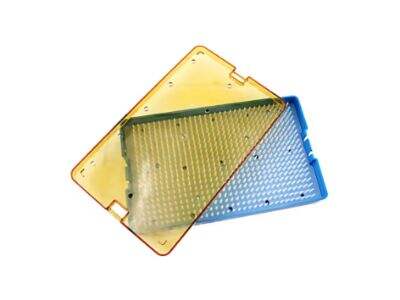Different sorts of Test tubes are very important for scientists doing their experiments in the laboratories. These test tubes from Meditech serve this purpose well as they allow the scientists to perform numerous experiments and tests which are necessary for their work. And here they discuss about the importance of having a wide range of test tubes to break for science.

Different Test Capillaries
This is science; they tried something and learned. Different tests need different sizes of test tubes or cat tinea test wood lamp. Certain experiments need test tubes that carry lots of liquids, while several require for longer durations to withstand unbearable heat tracing. Scientists need more than one kind of "test tube," to perform their experiments or get the results they seek if given only a sample. If the right tools are not used, then the results will obviously be badly delivered, and this is not good.
Why You Need Many Test Tubes
Having different types of test tubes lets scientists run all sorts of experiments much more easily. If you have old test tubes, it is a huge time-saver because it means that whenever you feel like doing something new with fermentation, you do not need to drive out and buy more home brew- capable test tubes or long feed box. You don't know if you have the correct test tube for your experiment or not, and similarly it implies that by mistake u didn't ruin some of ur experience. That is important because outwardly many scientists so visibly want their efforts to succeed.
What Different Test Tubes Do in the Lab
A good kitchen-equipped lab would contain many different kinds of glass test tubes, each designed for an individual application. Different Test Tubes You Might Encounter Here are a few examples of some test tubes you could possibly come across:
Conical test tubes; with a bigger exit place into which other liquids can mix. Scales of mass help scientists to combine and test substances.
Centrifuge test tubes: They are designed to spin fast. They help us isolate liquids from each other, an aspect that is crucial in the conduction of many experiments.
Culture test tubes: these are tightly sealed to keep what is inside safe. They are conducive for growing small organisms such as bacteria that researchers study.
Graduated test tubes - These are those with several lines in the side This allows scientists to determine the liquid volumes within - information that is rather critical for any test running on them.
Why every test tube is not the same
You can never run from the fact that it is difficult to conduct more than one kind of reaction in a similar type of test-tube. Every experiment has its own requirements, this is why scientists require different types of test tubes for their work. That failure to reproduce a false positive taught us that no single test tube is going to give the right answer; and if scientists use just one type of test tube, researchers might get more replicable results, but they will almost certainly be wrong. If you use the wrong test tube or PICC catheter, then it is a mistake will not give anything to learn from experiments.
Handling Many Test Tubes More Efficiently
One way to achieve this is with different test tubes that are designed for use in the lab, so scientists can streamline their work. When the effort used to do an experiment is lower, it means that if scientist has appropriate test tubes for this experiments will end faster and without such a problem. That translates to being able performing more experiments in a decreased amount of time, and well; TIME IS PRECIOUS in science. You will learn the more you experiment!
